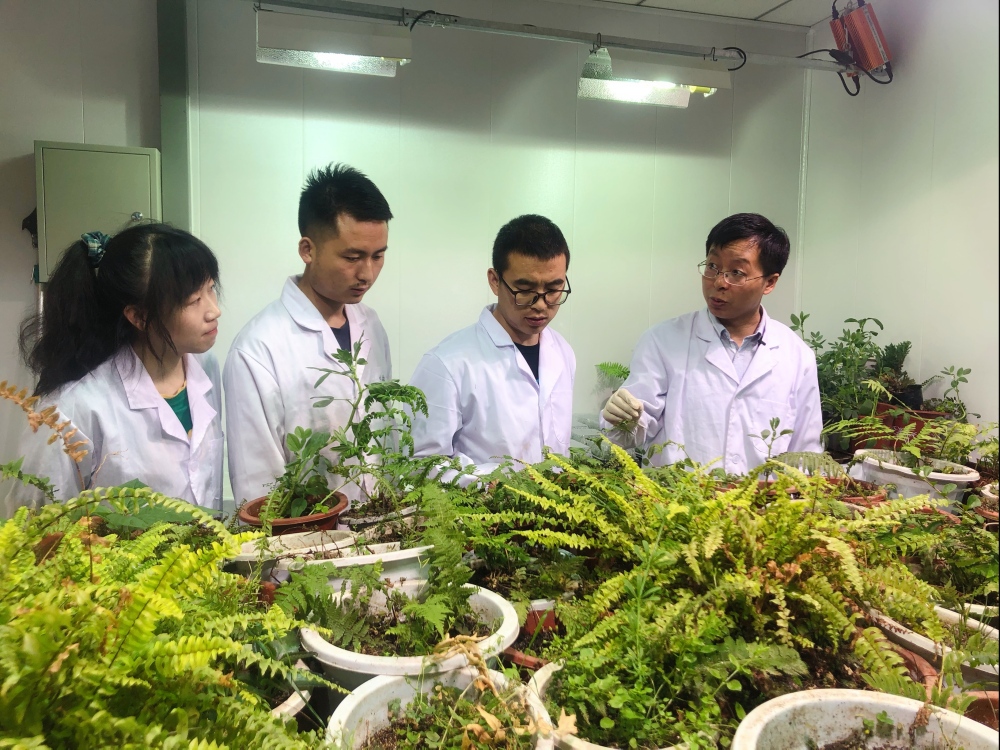
Photo taken on May 26, 2021 shows Fang Xiangwen, leader of the research team at the State Key Laboratory of Grassland Agro-Ecosystems of Lanzhou University, explaining to researchers the growth of Caragana plants. (Xinhua/Zhang Wenjing)
LANZHOU, June 9 (Xinhua) -- Chinese researchers have recently revealed why Caragana species, a genus of flowering plants, are widely distributed in deserts, semideserts and loesses with great drought tolerance.
Researchers at the School of Life Sciences, Lanzhou University have found that the leaves of Caragana species provide great efficiency and safety in hydraulic conductance, which allow them to grow and survive in arid and semiarid areas.
Caragana species play a key role in desertification control by forming shrub shelterbelts for crops and artificial grasslands and serve as supplemental livestock forage.
According to researchers, in mild water shortage, Caragana plants moderately close stomata and reduce transpiration to save water, with the photosynthetic rate decreasing slightly, while in severe water shortage, stomata can still keep minimum open so that plants can still carry on a certain level of photosynthesis to ensure survival.
The study also found that Caragana plants have a strong ability to absorb dew as their leaves densely covered with trichomes, which mitigates the adverse effects of drought and contributes to the distribution of the species in arid environments, said Fang Xiangwen, leader of the research team at the State Key Laboratory of Grassland Agro-Ecosystems of Lanzhou University.
The results of the study, which offer a useful guideline to vegetation restoration and ecological maintenance in arid and semi-arid regions, have been published in the journal New Phytologist.
https://xhnewsapi.xinhuaxmt.com/share/news_pc?id=573464922734592&showType=3002&utdId=WBPd7Vryi+ADALPQCe2kWBWk




